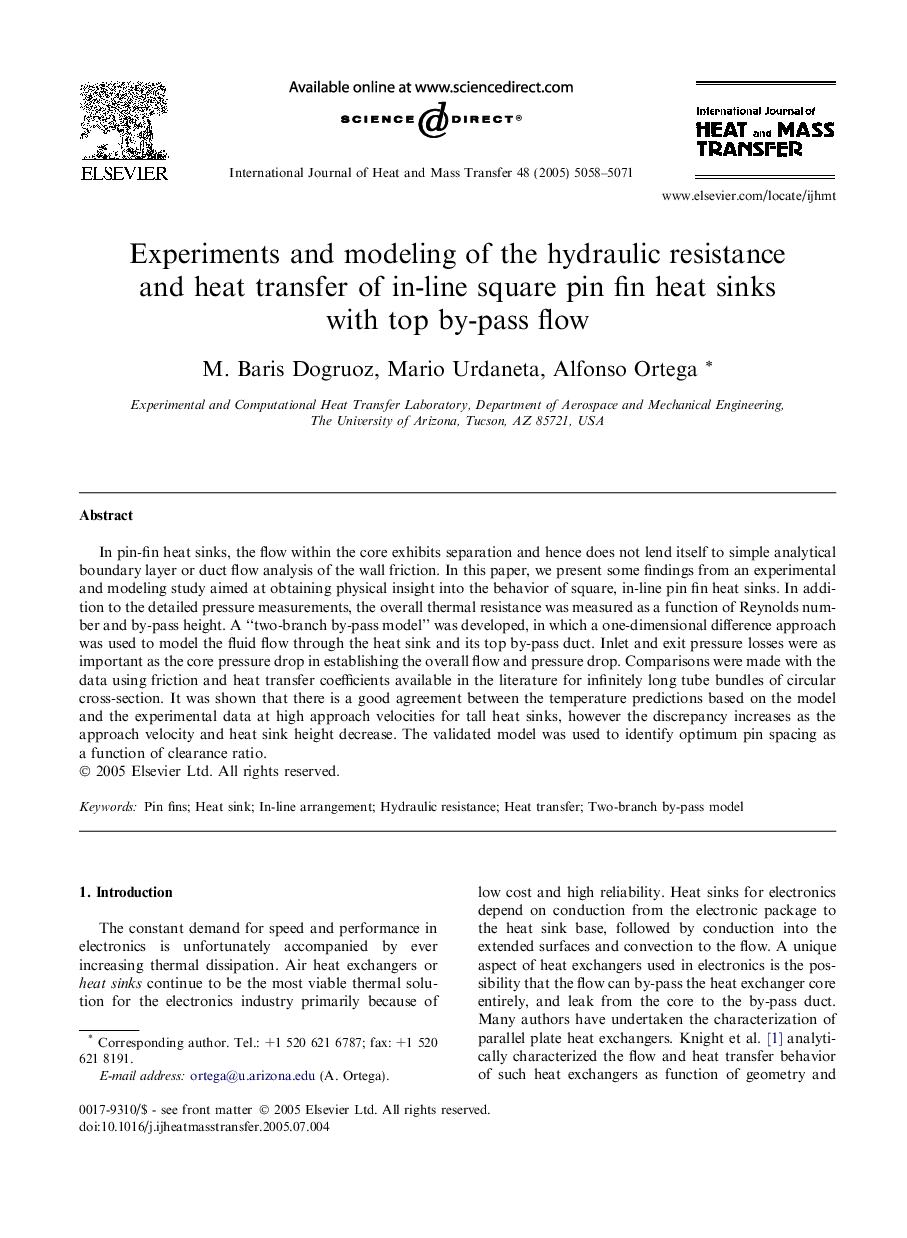| Article ID | Journal | Published Year | Pages | File Type |
|---|---|---|---|---|
| 662164 | International Journal of Heat and Mass Transfer | 2005 | 14 Pages |
Abstract
In pin-fin heat sinks, the flow within the core exhibits separation and hence does not lend itself to simple analytical boundary layer or duct flow analysis of the wall friction. In this paper, we present some findings from an experimental and modeling study aimed at obtaining physical insight into the behavior of square, in-line pin fin heat sinks. In addition to the detailed pressure measurements, the overall thermal resistance was measured as a function of Reynolds number and by-pass height. A “two-branch by-pass model” was developed, in which a one-dimensional difference approach was used to model the fluid flow through the heat sink and its top by-pass duct. Inlet and exit pressure losses were as important as the core pressure drop in establishing the overall flow and pressure drop. Comparisons were made with the data using friction and heat transfer coefficients available in the literature for infinitely long tube bundles of circular cross-section. It was shown that there is a good agreement between the temperature predictions based on the model and the experimental data at high approach velocities for tall heat sinks, however the discrepancy increases as the approach velocity and heat sink height decrease. The validated model was used to identify optimum pin spacing as a function of clearance ratio.
Related Topics
Physical Sciences and Engineering
Chemical Engineering
Fluid Flow and Transfer Processes
Authors
M. Baris Dogruoz, Mario Urdaneta, Alfonso Ortega,
